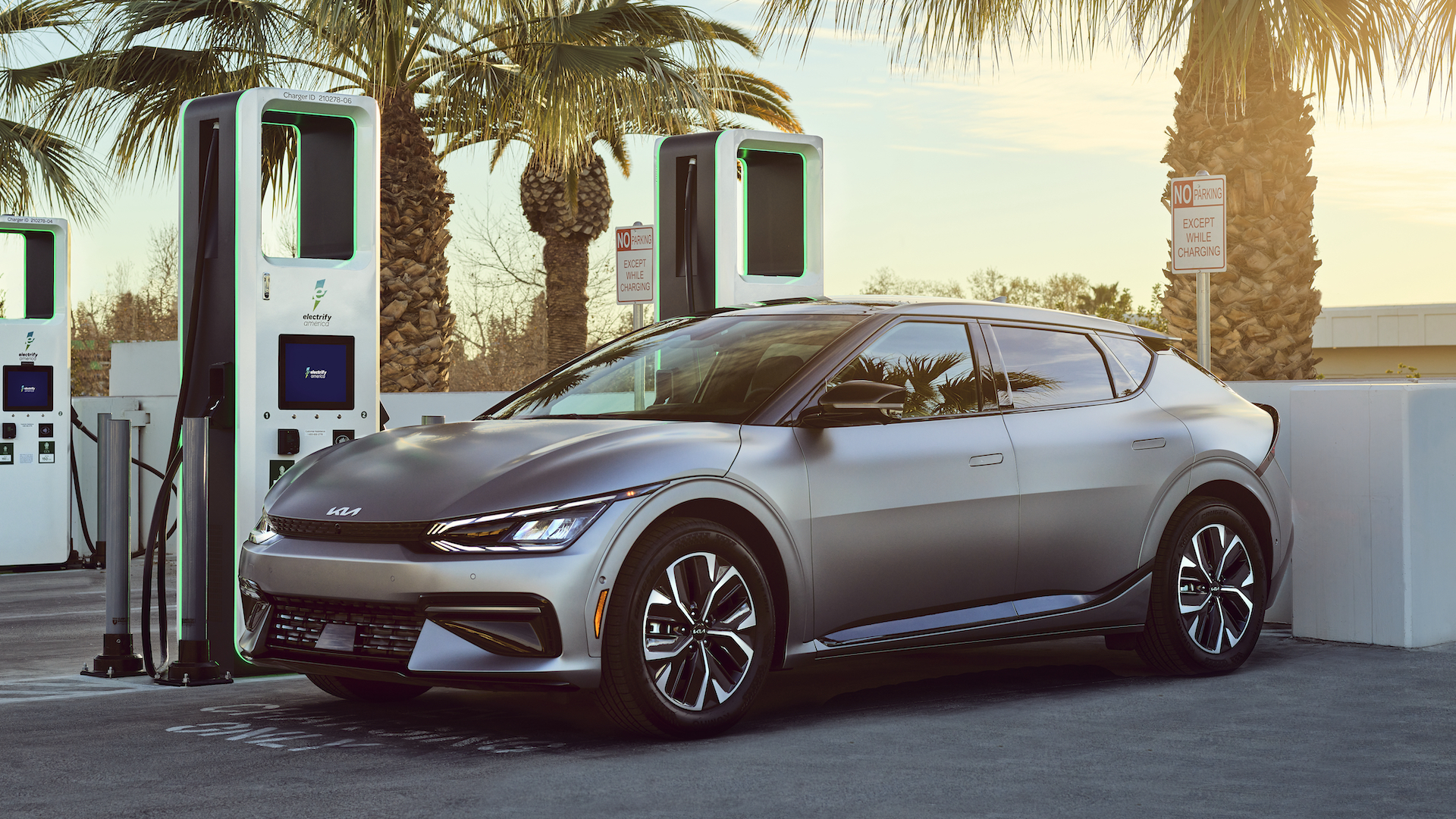

Electric cars are increasing their presence across the world, doubling in existence from 2021 to 2022, according to a new report from the International Energy Agency. In outlier places like Norway (where a sales ban for gas-powered cars is in place for 2025) EV sales have grown rapidly over the years, but now we’re seeing similar growth in the U.S., Europe, and China.
By raw numbers, the scale of EV growth is pretty impressive. In 2020, despite the COVID-19 pandemic keeping everyone indoors, three million new electric vehicles were registered. That was 41 percent up over 2019. In 2021, though, that number was 6.6 million, more than doubled again.
Sales of EVs have a very heavy skew towards a market that every automaker is desperate to get into: China. Unlocking access to the population of the world’s biggest country has been the goal for plenty of foreign automakers, with varying degrees of success over the years. What’s moved 3.3 million electric car sales in 2021, the IEA says, is that Chinese electric vehicles are as little as 10 percent more expensive than their gas-powered equivalents. Yes, the Ora Cat might be a total VW Beetle knockoff but with emissions regulations enforced strictly since 2019, it’s a much safer bet than trying to pick up the classic. The sales growth in China in 2021 nearly tripled the 2020 figures, which fits with global trends for being warier of public transport since the start of the pandemic.
EV sales have also increased 65 percent in Europe, to 2.3 million sales last year and nearly doubled in the United States to 630,000 vehicles sold. In contrast to China, the IEA report notes that most American and European EVs are a lot bigger (some of them much bigger) and that pushes up relative manufacturing costs compared to a gas car. If China’s difference is 10 percent, it says, then the U.S. and Europe are looking at more like 45-50 percent difference—which is enough to slow down adoption.
Another factor in EV adoption, the IEA’s report says, is investment infrastructure and incentives. In 2021, $30 billion of public money was announced as earmarked for EVs, globally. Add to that the fact there are just a bunch more choices for EVs today, and we can see why the increase. Sure, not every model is available in every market, but in general, EV models available have quintupled since 2015, the report says. It now puts the figure at 450 EV options available worldwide. Per the study, more EVs are now sold each week than in all of 2012, while the number of electric cars on the road by Dec. 2021 was estimated to be 16.5 million; triple the amount in 2018.
It wasn’t just a bubble last year, either. Two million EVs were sold globally in the first quarter this year already, which if it continues (and if chip shortages improve) then we’re on for another record-breaking year.
However, the report does caution that resource shortages are going to be the biggest limiting factor in expanding the EVs available to buy.
The key to getting people to buy EVs seems to be pretty simple: make them not prohibitively expensive compared to an internal combustion car. Contrary to a lot of the things that get overly talked about like range and fast-charging facilities, most people don’t do giant journeys all the time, making price the main and biggest differentiator. Tiny cars might not be palatable to the U.S., but the (relatively) competitively-priced F-150 Lightning’s success shows how price point truly matters.
Got a story tip? Mail it in on tips@thedrive.com